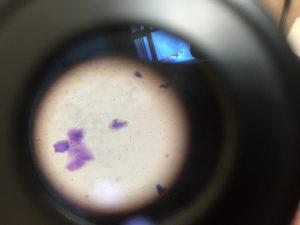Month: May 2017
How to Assess
 Loading...
Loading...
Self-Assessment form
proportional reasoning review : Finding a missing length
Part 1:
Part 2:
What characteristics make shapes similar?
- identify the angles and lengths of all sides.
- compare lengths by dividing corresponding lengths to find the scale factor
- if the quotient of all equations are the same then that’s one way to prove that they are similar.
- the second way is to compare all angles.
- find all the angles of the shape and compare them with the angles of the other shape.
- if all angles are the same, they are similar.
DNA model
- How are chromosomes, DNA, and genes related to each other?
They are related together because they all are found in one place which is DNA. Chromosomes are found in strands of DNA and Genes are found on segments of chromosomes.
- The licorice represented the sugar/phosphate backbone. The toothpicks represented the bonds between bases and backbone. The green marshmallow represented guanine, the yellow one represented adenine, the pink one represented cytosine and the orange represented thymine.
- This lab helped me understand which bases match together and it gave me a better understanding of how DNA works and how it’s related to chromosomes and genes.
Microscope lab reflection
1a) plant cells under a microscope look very transparent. There’s not much to see since the membrane of the onion was very thin. We did however see scale-like patterns in the background that had hints of light purple.
The cell structures I see are chloroplasts, cell membrane, cytoplasm and the cell wall.
1b) Animal cells have tiny shards floating around everywhere. Some are attached together. The background is clear but has little grey dots everywhere.
The cell structures I see are cytoplasm, the nucleus and the cell membrane.
- In my opinion, the way I can mostly tell plant and animal cells apart is what’s behind the cell structures. I found that animal cells don’t have much of a background than plant cells. Plant cells have a scaly background and animal cells do not. Another way I can tell them apart is how they are formed. Plant cells have a square like shape and animal cells have a circular shape.
- We use methylene blue on an animal cell because for this occasion the cells were transparent meaning that id we put it under a microscope we wouldn’t see anything since its clear. By adding pigment to the cells, it allows us to clearly see all the different types of cells.
We do not use it on plant cells because plant cells normally have colour so we can automatically see the cell structures without adding colour.
- I learned more about microscopes and how to properly focus objects using dials. I learned that it is very hard to see and observe animal and plant cells when looking for cell structures. Finally, I learned that you must first dye animal cells blue to see all the cells.
Questions:
Can we put more items under the microscope next time?
Do we always need to use methylene blue on animal cells?
Can we observe cells that move in real time under the microscope?
How does methylene blue work?
Curious:
What happens when we put a piece of fur underneath the scope?
What will we see if we put a piece of dust, food and clothing underneath?







